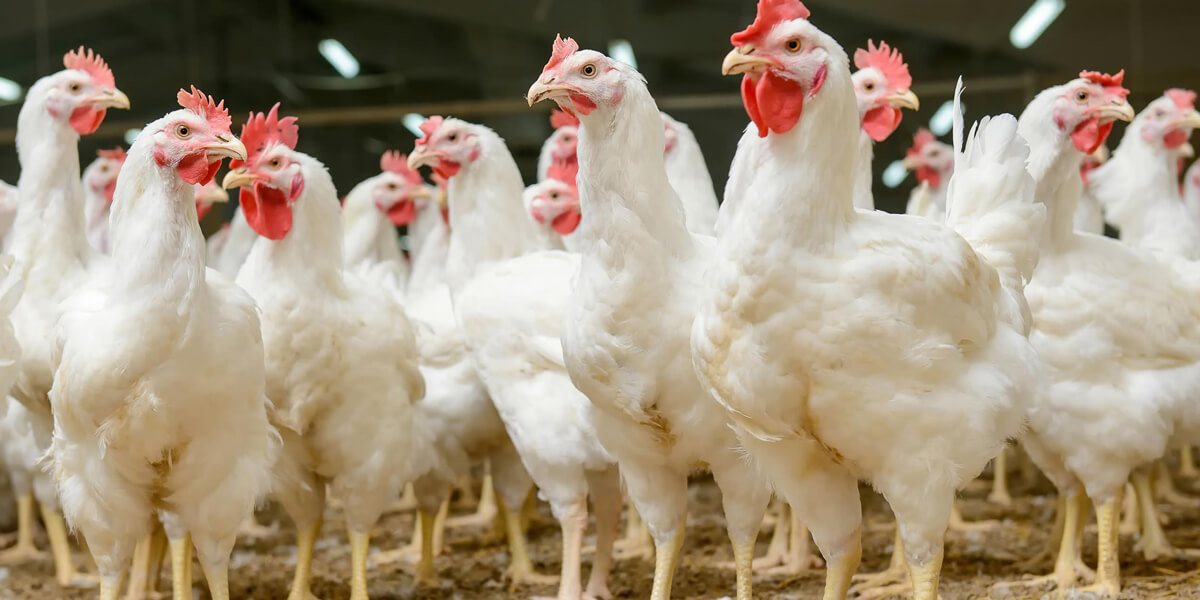It’s not very often that the subject of manned space travel comes up in a discussion about the poultry industry, but Dr. John Halley, Global Poultry Agriculture and Nutrition Leader at Cargill Protein, found a way during his presentation at our International Poultry Seminar in Chicago.
According to Halley, the one thing that’s going to limit how far we can travel into space is our food supply. Admittedly, frequent manned space travel is not in the near future, but this did help drive the main point of his presentation: The poultry industry is changing and so is the way we feed birds.
The industry has shifted toward more sustainable poultry production with more disciplined use of antibiotics. As the industry standards change, poultry producers are going to have to step up and do a lot more to improve the well-being of their birds.
We caught up with Dr. Halley after his presentation to ask him some questions about how the industry has changed and how poultry nutrition will be an essential tool for facing current and upcoming changes.
Q&A with Dr. John Halley, Cargill Protein
Marco Rebollo: What are driving factors causing changes in the poultry industry? Is it mostly government regulations?
John Halley: In the past, it was primarily government regulations and guidelines that were driving change in the poultry industry. Today, however, consumer groups, environmental groups and retailers are having more influence and are actually the ones driving much of the change, especially in the United States. For example, the trend of reducing the use of antibiotics in poultry production started in Europe and was government mandated. In the U.S., however, it is not government mandated, but is being driven by consumer demand and by retailers, such as fast food restaurants.
Consumers also want animal producers and farmers to be more sustainable. In fact, we asked 4,000 consumers in the U.S., China, Mexico and Spain which word best describes what they want a farmer to be and 30% said “sustainable.” This rate was higher than any other descriptor. We also asked what they feel a farmer should care about most and 55% said providing safe, healthy, abundant and affordable food.
MR: How is sustainability defined in the poultry industry?
JH: Sustainability is probably one of the most difficult things to define. Everyone is talking about it but there are many opposing views on what is actually sustainable. For example, some producers consider slow growing, low feed conversion broilers sustainable. If you look at the inputs required — more feed, more energy, more broiler houses, trucks, feed mills, etc. — most people would probably say that type of production is not sustainable.
MR: So, how difficult is it for poultry producers to get on board with these trends?
JH: In some ways, poultry producers in the industry have dreaded and held back from adopting these trends. Once they realize it’s something that they need to address, they realize it’s not that big of a deal. In some cases, it may require enhanced management, maintaining different records or conducting internal auditing. It’s nothing that can’t be done. For example, at Cargill, we are making a big push toward digitalization. As we put those systems into our operations, it becomes much easier to manage these types of production changes.
The best example of this is the reduction of antibiotic use. Poultry producers in the United States were absolutely dreading it and there was talk of it destroying the industry. The reality is that most companies started looking at how they could make it work and found that, while it was not easy, it actually made them better in a lot of ways.
MR: What are some of the factors that are leading to changes in poultry nutrition?
JH: When I first got into this industry, poultry production was all about growing a chicken without worrying about breast meat yield or anything like that. By the mid-90s, it became very important in the U.S. to raise birds with a high breast meat yield to meet consumer and retailer demands.
The increased demand for breast meat was driven by the food service and fast food industries. They found the chicken breasts were easy to prepare and were pleasing to the consumer whether it was placed on center plate in a restaurant or on a sandwich. This eventually led to consumers purchasing chicken breasts to prepare at home.
MR: So how did that affect poultry nutrition?
JH: In order to keep up with this demand, we switched from feeding total amino acids to feeding digestible amino acids like methionine and lysine. These amino acids allow us to reduce the protein in the feed, which is good for the environment, but still maintain high bird performance. Poultry producers started feeding new additives like Zinpro® Availa® Zn in their poultry nutrition programs to decrease skin lesions and carcass defects we used to see in the processing plants.
Lean more: Poultry Carcass Condemnation and Skin Integrity
Performance Trace Minerals Improve Poultry Health
Feeding performance trace minerals, like zinc from Zinpro Availa-Zn, helps reduce the amount of feed required to reach market weight by improving feed conversion rate, and build a robust immune system and strong epithelium to protect birds against diseases and challenges, and improve overall performance and meat yield.
To learn more about feeding Zinpro Availa-Zn in your poultry operation, contact your Zinpro representative today.
* Editors note: Dr. Halley has made a career change since attending the Zinpro International Poultry Seminar in August 2019 and is no longer employed by Cargill Protein.

